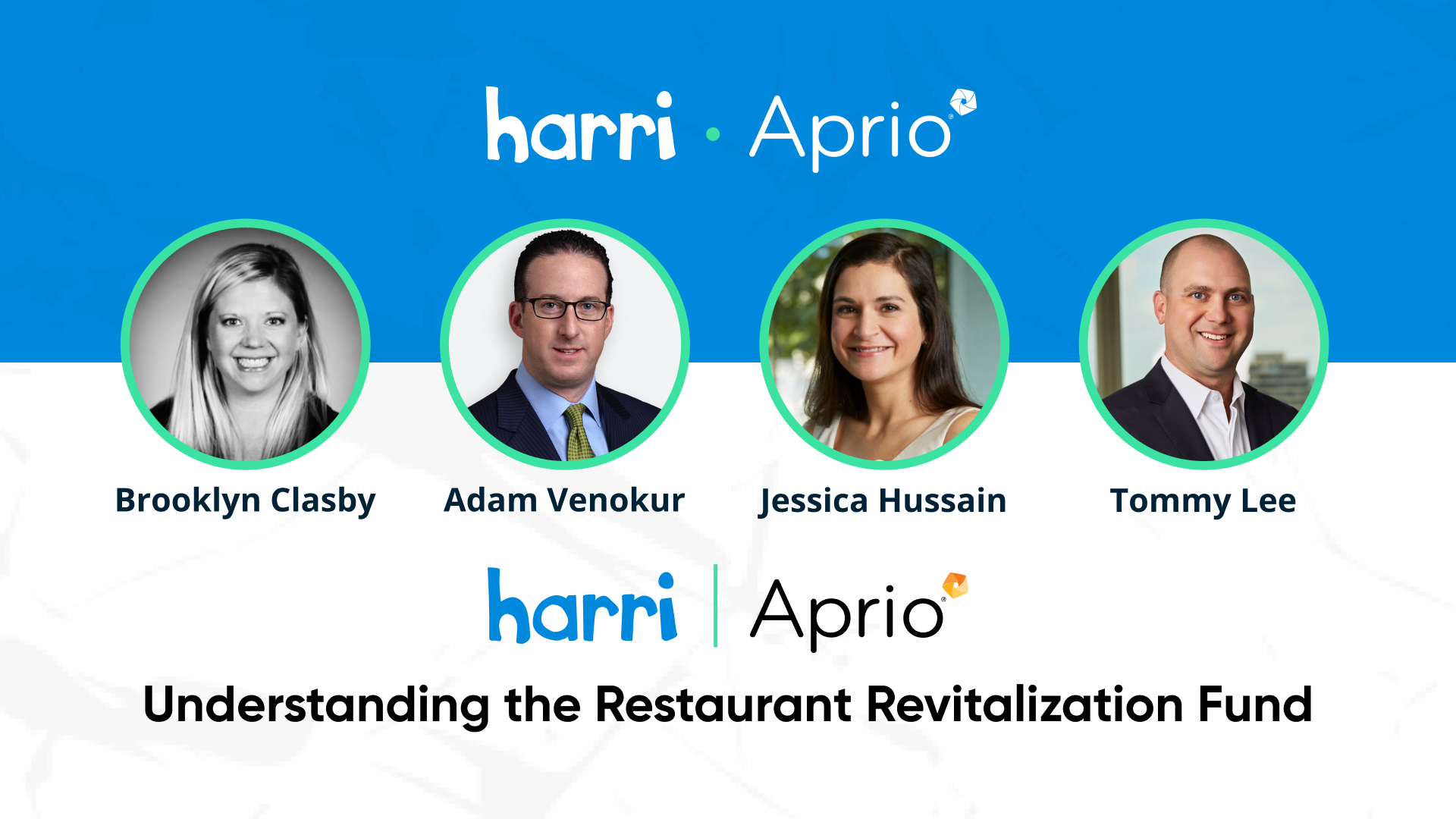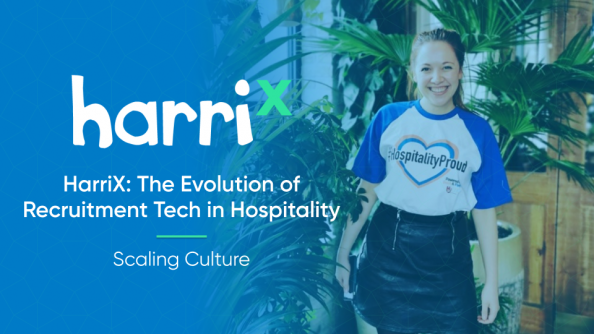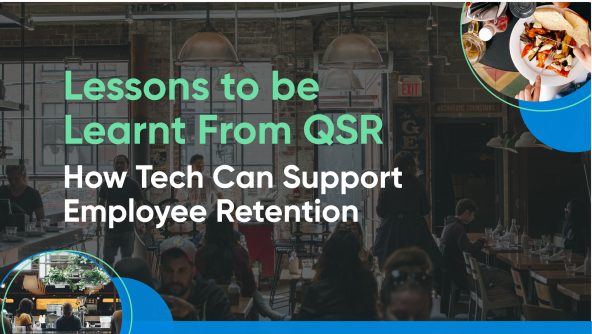Harri | Aprio Webinar Recap: Understanding The Restaurant Revitalization Fund

- By Harri Insider Team | March 29, 2021
This month, Brooklyn Clasby, Senior Enterprise Account Executive, at Harri caught up with Jessica Hussain (Tax Partner, Aprio), Adam Venokur (Northeast Regional Managing Partner, Aprio), and Tommy Lee (Partner-in-Charge, Aprio) to discuss the Restaurant Revitalization Fund, who qualifies for aid, how to calculate your grant, the application process, and more.
What is the Restaurant Revitalization Fund?
On March 11th, 2021, the American Rescue Plan Act of 2021 was signed into law. Included in the ARPA is the Restaurant Revitalization Fund (RRF), a fund dedicated to provide financial aid to small restaurants negatively impacted by COVID-19.
The Restaurant Revitalization Fund provides $28.6 billion in grants, not loans, that are considered non-taxable, deductible expenses. $5 billion of that fund will be set aside for restaurants with $500,000 or less in sales in 2019.
Below, the panelists cover RRF eligibility and dive deep into financial specifics.
Who is eligible for the Restaurant Revitalization Fund?
Any business seeking aid from the Restaurant Revitalization Fund must have been operating since March 13, 2020. However, the APRA provides additional provisions for an eligible entity that was not in operation for any or all of 2019.
Because the RRF targets smaller businesses, these entities also must own or operate less than 20 locations, including affiliates.
Businesses eligible to receive aid from the Restaurant Revitalization Fund include:
- Restaurants
- Food stands
- Food trucks
- Food carts
- Caterers
- Saloons
- Inns
- Taverns
- Bars
- Lounges
- Brewpubs
- Tasting rooms and taproom-licensed facilities
This list also includes similar businesses where “the public or patrons assemble for the primary purpose of being served food or drink.”
Restaurant Revitalization Fund certification process
Restaurants must fulfill two criteria to certify that they’re eligible for RRF grants.
- Funds received from the RRF must support the restaurant’s ongoing operations
- The restaurant has not received aid from the Shuttered Venues Operators Grant (Section 324 of The Aid to Hard-Hit Small Businesses, Nonprofits, and Venues Act)
If both criteria are met alongside business eligibility requirements, a restaurant may apply for aid from the Restaurant Revitalization Fund. However, the panelists did note that we can expect additional clarity regarding eligibility to be communicated in the near future.
How to calculate your Restaurant Revitalization Fund grant amount
Aid from the RRF grant will be equal to the pandemic-related revenue loss starting from 2019. From there, you will subtract any PPP loans obtained in 2020 or 2021.
Jessica notes that it doesn’t matter if your PPP loans were forgiven or not, the full amount will still be subtracted from your RRF grant. That means if your PPP loans exceed your Restaurant Revitalization Fund grant amount, you will not be eligible for RRF aid.
Regarding Restaurant Revitalization Fund grant totals, an individual RRF grant cannot exceed $5 million. Grants for an affiliated group cannot exceed $10 million.
What can Restaurant Revitalization Fund funds be spent on?
Aid received from the Restaurant Revitalization Fund must be used to cover expenses between February 15, 2020, and December 31, 2021.
Funds can also be used on a date established by the SBA that will not exceed two years after the signing of the American Rescue Plan Act.
Restaurant Revitalization Fund funds can be spent on:
- Payroll
- Mortgage interest and principal interest
- Rent
- Construction for outdoor dinings and covered areas
- Utilities
- Maintenance
- Supplies
- Food and beverage expenses
- Covered supplier costs
- A broad range of operational expenses
- Paid sick leave
- Other miscellaneous expenses determined by the SBA
How to apply for Restaurant Revitalization Fund fund grants
Operators can begin applying for the Restaurant Revitalization Fund funds 60 days after the signing of the bill, which the panelists estimate should be May 9, 2021.
Jessica notes that grants issued for the first 21 days will prioritize women-owned and veteran-owned businesses, as well as economically-disadvantaged businesses.
Because RRF loans are processed directly with the SBA, no banks are involved. Tommy points out that this may be a pain point because “the SBA doesn’t move nearly as fast as the banks.”
Restaurant Revitalization Fund Application Process
At this time, there are no official rules or processes to apply for Restaurant Revitalization Fund aid.
While guidelines are expected to be released closer to the fund’s application window, Jessica notes that the National Restaurant Association and the Independent Restaurant Coalition are publishing general guidance on what to expect.
According to the IRC, the Restaurant Revitalization Fund grant process should be similar to other government-issued grants. Tommy recommends looking through their guidance sooner rather than later to get a jumpstart on the application process once it opens up, such as getting PnLs organized.
Stacking other COVID-19 relief with the Restaurant Revitalization Fund
With so many government-issued COVID-19 relief options, the panelists outline how they may interact with aid received from the Restaurant Revitalization Fund.
- PPP funds must be subtracted from RRF aid (as mentioned above)
- Expenses may not be double-dipped into additional aid options
- Employee wages may not be double-dipped into additional aid options
Tommy emphasizes that RRF grant aid will probably come between May and July, but the second round of PPP ends March 31st. Operators should hold off on applications if they’re about to submit for forgiveness. Banks may be able to call back submissions if you contact them soon enough.
The panelists also recommend that business owners “get their ducks in a row early,” and begin setting up a controlled financial environment to track costs and ensure audit and reporting compliance.
Restaurant Revitalization Fund reporting and audits
While PPP requirements were straightforward and easy to follow, the panelists expect that Restaurant Revitalization Fund reporting and auditing may have more in-depth requirements.
If your RRF grant receipts total $750K in aggregate, you’ll be required to undergo a Single Audit under the Office of Management and Budget. While these government audits are not as strict as financial audits, they do require some preparation.
The general process for Single Audit includes:
- Internal controls around capturing RRF-related costs
- Identifying those costs in terms of the RRF grant
- Reporting those costs
Tommy emphasizes again that restaurant operators should partner with an accountant or an expert at Aprio to help develop that internal controlled financial environment.




















